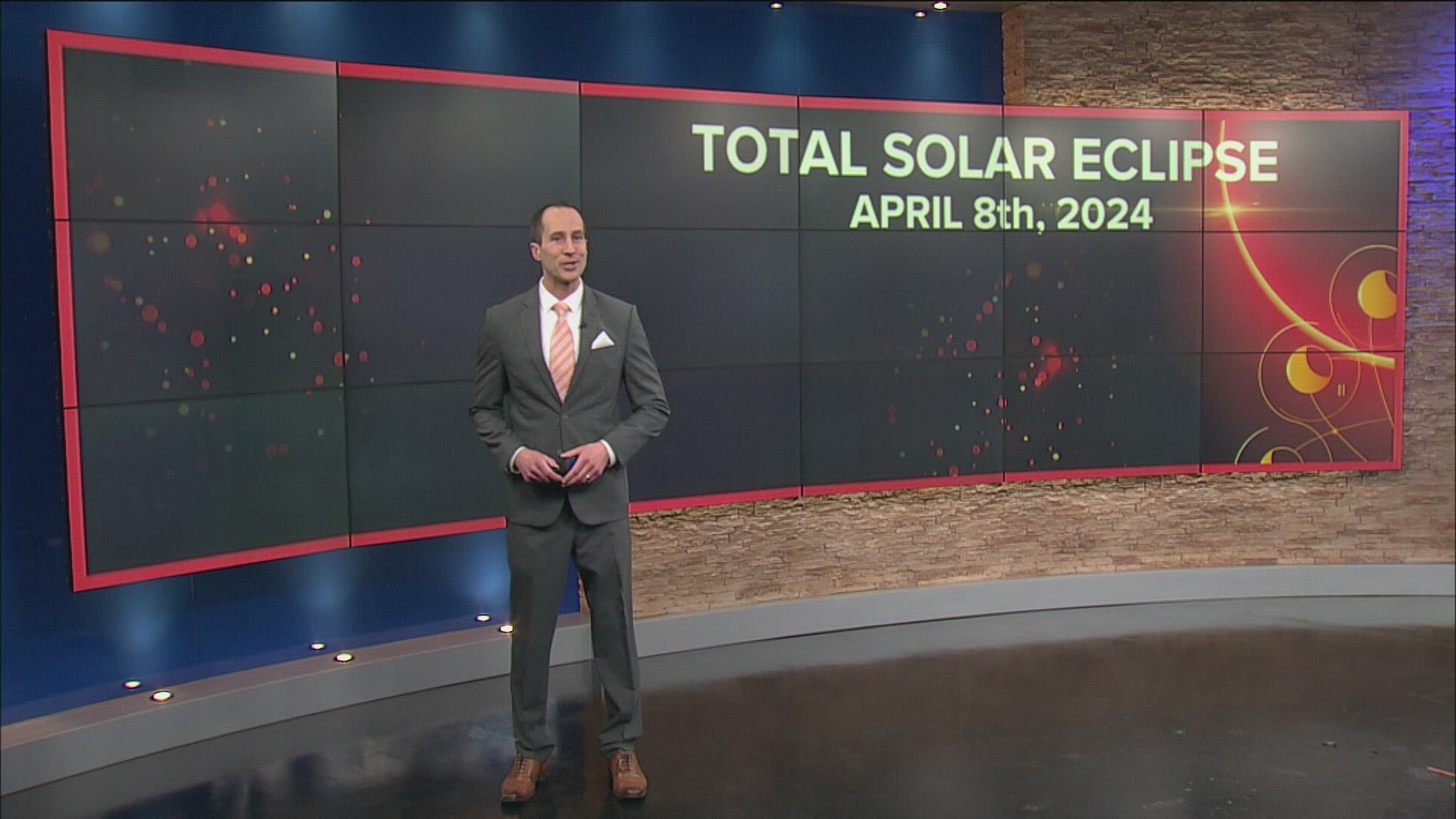TOLEDO, Ohio — The WTOL 11 Weather Team is preparing for what you need to know for the total solar eclipse on April 8. First, let's break down the science behind this phenomenon:

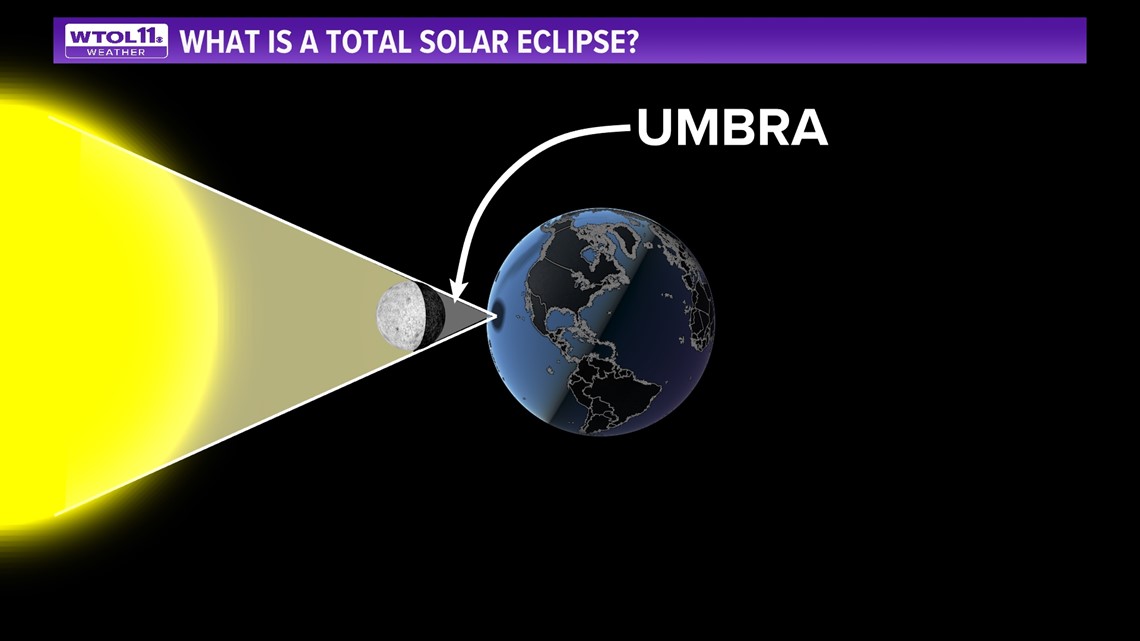
A total solar eclipse occurs when the moon passes between the sun and Earth, completely blocking the face of the sun. The umbra is the area in which the moon completely blocks the sun's light and casts a shadow on the Earth's surface — a total eclipse of the sun.
The width of this shadow on the face of the Earth is very narrow with respect to the size of the planet: during the 2024 eclipse, the shadow will be approximately 110 miles wide as it passes directly over northern Ohio.
The outer shadow circle, the penumbra, shows the extent of the partial eclipse. For a few very short minutes on the afternoon of April 8, most of northern Ohio will be completely in the shadow of the moon.
You won't want to miss this event, which is just around the corner. Let's take a look at the three things to know to be prepared for the total solar eclipse.
#3 The path of totality
The total solar eclipse is a once-in-a-lifetime event in Ohio. This will be the first time in over 200 years the state of Ohio experiences a total solar eclipse. The last time a total solar eclipse passed over Ohio was in 1806. It is truly rare to be in the narrow path of totality of a total solar eclipse.
What exactly does a total solar eclipse look like? It is a few mere moments of totality, when the moon completely covers the disk of the sun. At totality, the sun is 100% eclipsed, a rare opportunity to view the sun’s corona with your very own eyes.

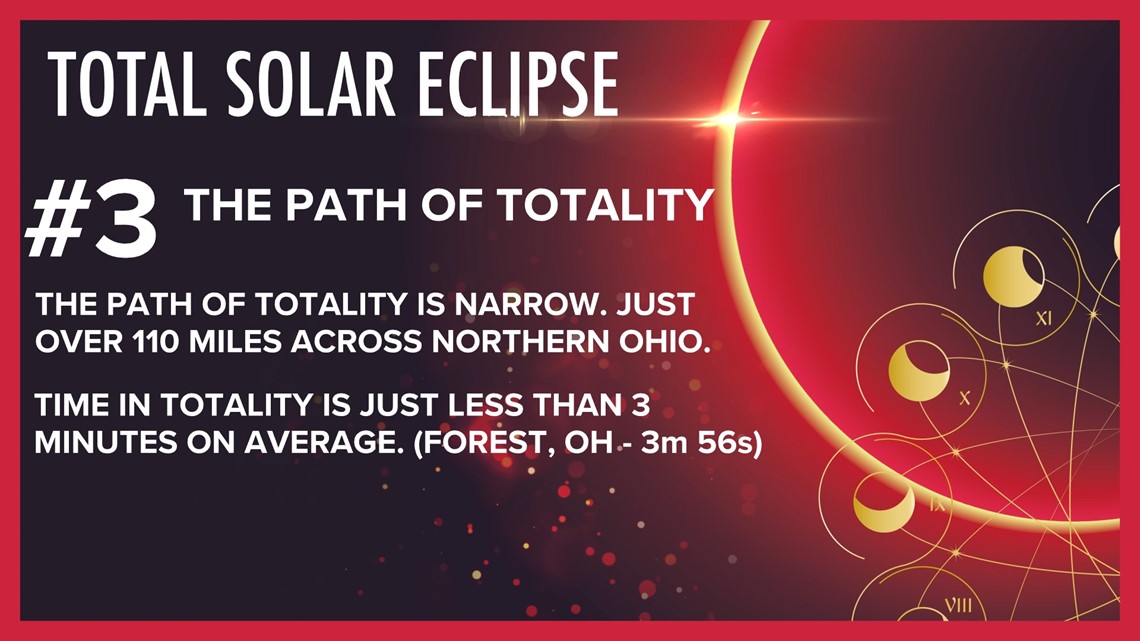
For most areas in northern Ohio the time in totality will average just under three minutes. Another total solar eclipse won't pass through Ohio until 2099, so you may never have a chance to view this rare event in this area again.
To get the full experience of a total solar eclipse, it is crucial that you are in the narrow path of totality. From the penumbra, the area outside of the umbra and path of totality, only a partial solar eclipse will be visible.
The partial eclipse will be slight near the outer circle and deep near the path of totality. While only a narrow corridor of the United States will experience totality, the entire contiguous United States will at least be cast in a partial solar eclipse. For the full effect, you must get inside the path of totality! 99% is not the same as 100%.
#2 Spectacle of the decade!
The lure of the eclipse will bring tens of millions of visitors flocking to the path of totality. Potentially hundreds of thousands of people could visit northwest Ohio in early April to catch the event.
The rarity of totality may bring a once in a lifetime opportunity to view the sun’s corona. The event is expected to have a major impact on local businesses, economy, local schools and higher education. This is an opportunity to learn outside the classroom.


#1 A rare look at the sun’s corona
The only opportunity to view the sun’s corona is within the path of totality What is the corona? It is the outermost part of the sun’s atmosphere. It is composed mainly of plasma, which are hot ionized gasses. The corona is usually hidden by the bright light of the sun's surface, which makes it impossible to see without using special instruments and filters -- barring, of course, a total solar eclipse.

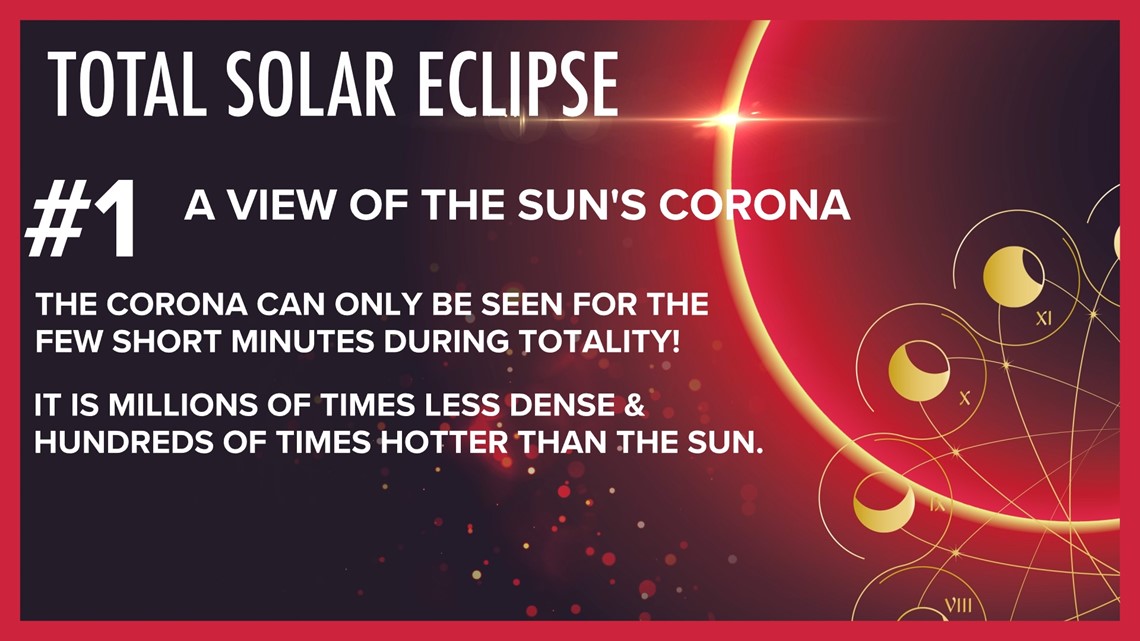
During the total solar eclipse, the few short minutes of totality is the only time the corona is uniquely visible and can be seen with the naked eye. This is the moment the moon is completely blocking the direct rays of the sun, revealing the solar corona.

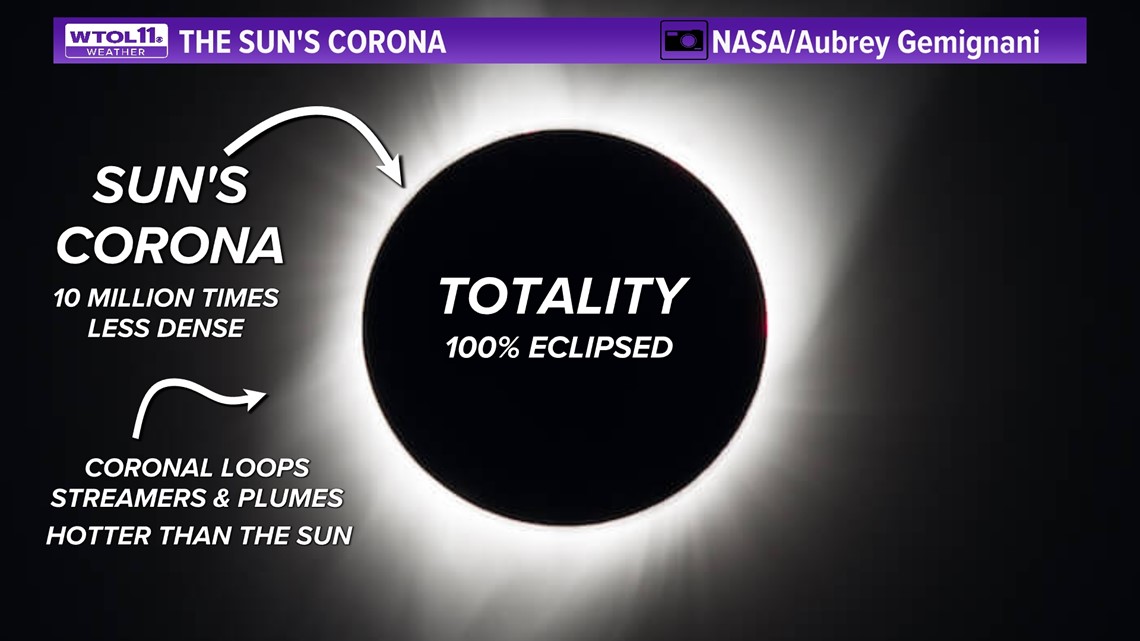
Why is the corona so dim?
The corona reaches extremely high temperatures. However, the corona is very dim and cannot be seen without very special equipment, except for the extremely rare and short time of totality.
The sun's corona is about 10 million times less dense than the sun’s surface. This low density makes the corona much less bright than the surface of the sun. The corona continually varies in size and shape as it is affected by the sun's magnetic field.
Why is the corona so hot?
It’s hard to believe, but the sun’s corona is hotter than the sun itself. The corona is in the outer layer of the sun’s atmosphere—far from its surface. Yet the corona is hundreds of times hotter than the Sun’s surface. The corona’s high temperatures are actually bit of a mystery to astronomers and other scientists.
A NASA mission called IRIS may have provided one possible answer. The mission discovered packets of very hot material called "heat bombs" that travel from the sun into the corona. In the corona, the heat bombs explode and release their energy.
Another theory is the possibility of solar tornadoes, which are giant vertical spirals of plasma that interact with the sun’s magnetic field. This is a “hot” topic that researchers continue to study and debate as our understanding of our solar system expands.
What are coronal loops and streamers?
The surface of the sun is covered in incredibly strong magnetic fields. The sun's magnetic fields affect charged particles in the corona to form beautiful features. These include streamers, loops, and plumes. We can view these features in detail with special telescopes, but these features and others may be uniquely visible during totality. Other unique features include Baily's beads or the Diamond ring that you may be able to see during totality.
Stay with WTOL 11 on-air, online and on our free mobile news and weather apps for the latest in total solar eclipse coverage.
MORE 2024 TOTAL SOLAR ECLIPSE COVERAGE FROM WTOL 11

